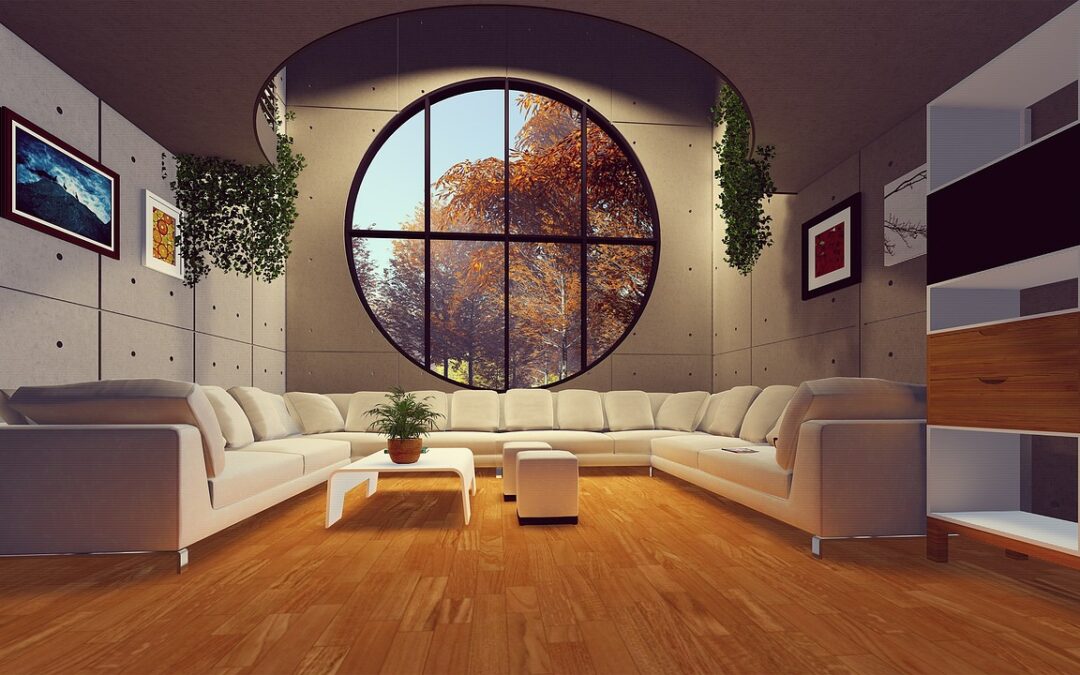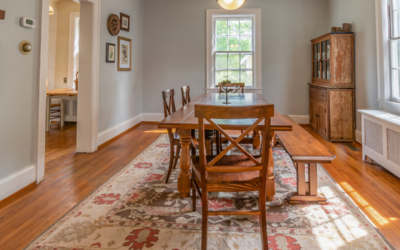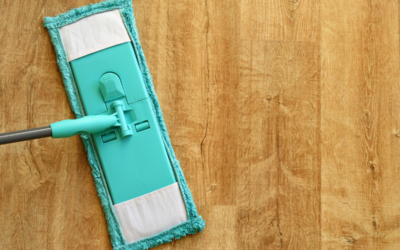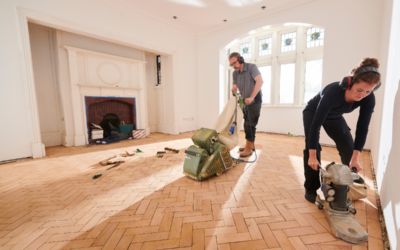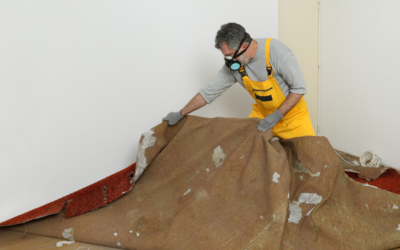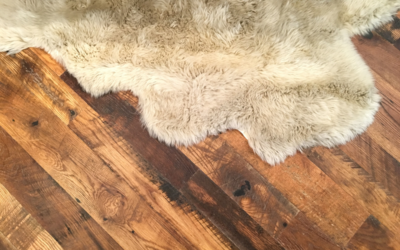Revive Your Home’s Charm: How to Resurface Wood Floors for a Stunning Makeover
Wood floors are a timeless and elegant choice for any home. They add warmth, character, and beauty to a space, and can last for decades if properly maintained. However, over time, wood floors can become worn, scratched, and dull. This is where resurfacing comes in. Resurfacing wood floors is the process of sanding down the top layer of the floor to remove scratches and imperfections, and then applying a new finish to restore its original beauty.
Resurfacing wood floors is important for several reasons. First and foremost, it helps to maintain the durability and longevity of the floors. By removing scratches and imperfections, resurfacing prevents further damage and extends the life of the floor. Additionally, resurfacing can transform the look of a room. Whether you want to change the color of your floors or simply restore their original shine, resurfacing can help you achieve the desired look.
The process of resurfacing wood floors can be complex and time-consuming. It requires careful preparation, skillful execution, and attention to detail. From cleaning and repairing the floor to sanding, staining, and sealing, each step plays a crucial role in achieving a beautiful and long-lasting result. In this article, we will explore the different types of wood floors, the resurfacing process, tips for maintaining your newly resurfaced floors, and the benefits of resurfacing for your home’s value.
Key Takeaways
- Resurfacing wood floors can transform the look and value of your home.
- Understanding the type of wood floor you have is important for proper resurfacing.
- Cleaning and repairing the floor before resurfacing is crucial for a successful outcome.
- The resurfacing process involves sanding, staining, and sealing the floor.
- Choosing the right stain and finish is important for achieving the desired look.
Understanding the Different Types of Wood Floors
Before diving into the resurfacing process, it’s important to understand the different types of wood floors and their unique characteristics. There are three main types of wood floors: solid wood floors, engineered wood floors, and laminate wood floors.
Solid wood floors are made from a single piece of hardwood throughout. They are known for their durability and can be sanded down multiple times over the years. Engineered wood floors, on the other hand, are made up of multiple layers of wood veneer with a plywood core. They are more resistant to moisture and can be a good option for areas with high humidity. Laminate wood floors, on the other hand, are not made of real wood. They are made of a composite material with a printed image of wood grain on top.
Each type of wood floor has its own unique resurfacing requirements. Solid wood floors can be sanded down and refinished multiple times, while engineered wood floors can typically be sanded down once or twice. Laminate wood floors, however, cannot be sanded down or refinished. Instead, they may need to be replaced if they become damaged or worn.
Preparing for Resurfacing: Cleaning and Repairing the Floor
Before you can begin the resurfacing process, it’s important to prepare the floor properly. This involves removing all furniture and rugs from the room to ensure that the entire floor is accessible. Once the floor is clear, it’s time to clean it thoroughly. This includes sweeping or vacuuming up any dirt and debris, and then mopping the floor with a gentle cleaner.
After cleaning the floor, it’s important to inspect it for any damages or cracks that may need to be repaired before resurfacing. This could include filling in gaps between boards, repairing loose or squeaky boards, or replacing any damaged boards altogether. Taking the time to repair these issues before resurfacing will ensure that your floors look their best and are structurally sound.
The Resurfacing Process: Sanding, Staining, and Sealing
| Process | Duration | Cost | Frequency |
|---|---|---|---|
| Sanding | 1-2 days | 500-1000 | Every 5-10 years |
| Staining | 1-2 days | 500-1500 | Every 5-10 years |
| Sealing | 1-2 days | 500-1000 | Every 2-3 years |
Once the floor is clean and repaired, it’s time to begin the resurfacing process. The first step is sanding the floor to remove the old finish and any imperfections. This is typically done using a drum sander or a floor buffer with sanding pads. It’s important to start with a coarse grit sandpaper and gradually work your way up to a finer grit to achieve a smooth and even surface.
After sanding, it’s time to stain the floor if desired. Staining can help to change the color of the wood or enhance its natural beauty. There are many different types and shades of stain available, so it’s important to choose one that complements your home’s decor and personal style. It’s also important to apply the stain evenly and allow it to dry completely before moving on to the next step.
The final step in the resurfacing process is sealing the floor. This helps to protect the wood from wear and tear, as well as moisture damage. There are several different types of finishes available, including polyurethane, oil-based finishes, and water-based finishes. Each type of finish has its own unique characteristics and benefits, so it’s important to choose one that suits your needs and preferences.
Choosing the Right Stain and Finish for Your Wood Floors
Choosing the right stain and finish for your wood floors is an important decision that will impact the overall look and durability of your floors. When it comes to stains, there are many different options available, ranging from light to dark shades. It’s important to consider factors such as the color of your walls, furniture, and other elements in the room when choosing a stain.
In addition to color, it’s also important to consider the type of finish you want for your wood floors. Polyurethane finishes are popular because they are durable and long-lasting. They come in both glossy and matte finishes, allowing you to choose the level of shine you prefer. Oil-based finishes are another option, offering a rich and warm look. Water-based finishes are a more environmentally friendly option, as they have lower VOC emissions.
When choosing a stain and finish for your wood floors, it’s important to consider factors such as durability, ease of maintenance, and the overall look you want to achieve. It’s also a good idea to test the stain and finish on a small, inconspicuous area of the floor before applying it to the entire surface.
DIY vs. Professional Resurfacing: Which Option is Right for You?
When it comes to resurfacing wood floors, you have the option to do it yourself or hire a professional. Both options have their pros and cons, so it’s important to consider your own skills, time availability, and budget before making a decision.
DIY resurfacing can be a cost-effective option if you have the necessary skills and tools. It allows you to have full control over the process and can be a rewarding project to take on. However, it’s important to note that resurfacing wood floors is a complex and time-consuming process that requires skill and attention to detail. If you don’t have experience with this type of work, it’s easy to make mistakes that can result in an uneven or damaged floor.
Hiring a professional to resurface your wood floors can be a good option if you don’t have the time or skills to do it yourself. Professionals have the experience and expertise to ensure that the job is done correctly and efficiently. They also have access to professional-grade tools and materials that may not be readily available to DIYers. However, it’s important to do your research and choose a reputable professional with a track record of quality work.
When making the decision between DIY and professional resurfacing, it’s important to consider factors such as your own skills and comfort level with DIY projects, the time you have available, and your budget. If you decide to go the DIY route, make sure to educate yourself on the proper techniques and safety precautions before starting the project.
Tips for Maintaining Your Newly Resurfaced Wood Floors
Once your wood floors have been resurfaced, it’s important to take steps to maintain their beauty and durability for years to come. Regular cleaning and maintenance are key to keeping your floors looking their best. Here are some tips to help you maintain your newly resurfaced wood floors:
1. Sweep or vacuum regularly: Dirt, dust, and debris can scratch the surface of your wood floors, so it’s important to sweep or vacuum them regularly. Use a soft-bristle broom or a vacuum cleaner with a hardwood floor attachment to avoid scratching the surface.
2. Clean spills immediately: Water and other liquids can damage wood floors if left sitting for too long. Clean up spills immediately using a soft cloth or mop. Avoid using excessive water, as it can seep into the wood and cause damage.
3. Use the right cleaning products: Avoid using harsh chemicals or abrasive cleaners on your wood floors, as they can strip away the finish and damage the wood. Instead, use a pH-neutral cleaner specifically designed for wood floors.
4. Protect your floors from furniture: Place felt pads or furniture glides under the legs of your furniture to prevent scratches and dents. Avoid dragging heavy furniture across the floor, as this can also cause damage.
5. Avoid wearing high heels or shoes with sharp heels on your wood floors, as they can cause dents and scratches.
6. Use rugs or mats in high-traffic areas: Placing rugs or mats in entryways, hallways, and other high-traffic areas can help protect your wood floors from wear and tear.
By following these tips and taking care of your newly resurfaced wood floors, you can ensure that they continue to look beautiful for years to come.
Incorporating Wood Floors into Your Interior Design
Wood floors are incredibly versatile and can be incorporated into a wide range of interior design styles. Whether you prefer a rustic, farmhouse look or a sleek, modern aesthetic, wood floors can complement any decor. Here are some ideas for incorporating wood floors into your home’s design:
1. Embrace the natural beauty of the wood: If you have chosen a stain that enhances the natural beauty of the wood, let it shine by keeping the rest of the room simple and understated. Choose furniture and accessories in neutral colors and natural materials to create a cohesive and timeless look.
2. Create contrast with dark wood floors: Dark wood floors can create a dramatic and sophisticated look in any room. Pair them with light-colored walls and furniture to create contrast and make the floors the focal point of the space.
3. Mix and match different wood tones: Don’t be afraid to mix and match different wood tones in your home. For example, you could have light wood floors in one room and dark wood floors in another. This can create visual interest and add depth to your home’s design.
4. Layer rugs on top of wood floors: Rugs can add warmth, texture, and color to a room with wood floors. Layering rugs on top of your wood floors can help define different areas within a space and add visual interest.
5. Use wood floors as a backdrop for bold colors: If you love bold colors, consider using wood floors as a neutral backdrop for your vibrant furniture and accessories. The natural warmth of the wood will help balance out the boldness of the colors.
By incorporating wood floors into your home’s design, you can create a warm and inviting space that reflects your personal style.
The Benefits of Resurfacing Wood Floors for Your Home’s Value
Resurfacing wood floors not only enhances the beauty and durability of your home’s flooring, but it can also have a positive impact on its value. Here are some benefits of resurfacing wood floors for your home’s value:
1. Increased curb appeal: Wood floors are highly desirable among homebuyers, and resurfacing them can significantly increase the curb appeal of your home. A well-maintained and beautifully resurfaced wood floor can make a strong first impression and attract potential buyers.
2. Higher resale value: Resurfacing wood floors can increase the resale value of your home. Potential buyers are willing to pay a premium for homes with well-maintained and attractive wood floors, as they are seen as a luxury feature.
3. Longer lifespan: By resurfacing your wood floors, you are extending their lifespan and ensuring that they remain in good condition for years to come. This can be a major selling point for potential buyers, as they won’t have to worry about replacing the flooring in the near future.
4. Versatility: Wood floors are versatile and can complement a wide range of interior design styles. This means that potential buyers will be able to easily envision themselves living in your home and making it their own.
5. Return on investment: Resurfacing wood floors can provide a high return on investment. According to Remodeling Magazine’s Cost vs. Value report, homeowners can expect to recoup an average of 91% of the cost of refinishing wood floors when they sell their home.
By resurfacing your wood floors, you are not only improving the look and durability of your home’s flooring, but you are also increasing its value and appeal to potential buyers.
Transforming Your Home with Resurfaced Wood Floors
Resurfacing wood floors is a transformative process that can breathe new life into your home’s flooring. Whether you choose to do it yourself or hire a professional, the results can be stunning. From sanding and staining to sealing and maintaining, each step plays a crucial role in achieving beautiful and long-lasting wood floors.
By understanding the different types of wood floors, preparing the floor properly, choosing the right stain and finish, and maintaining your newly resurfaced floors, you can enjoy the beauty and durability of wood floors for years to come. Not only will resurfacing wood floors enhance the look and feel of your home, but it can also increase its value and appeal to potential buyers.
So, if you’re looking to transform your home and add a touch of elegance and warmth, consider resurfacing your wood floors. With proper care and maintenance, they will continue to be a beautiful and timeless feature of your home for years to come.
If you’re looking to bring new life to your worn-out wood floors, we have just the solution for you. Our latest article on resurfacing wood floors provides a step-by-step guide to help you achieve stunning results. From sanding and filling gaps to applying a fresh coat of finish, this comprehensive tutorial covers all the essential techniques you need to know. Don’t miss out on this valuable resource – check out the article here and get ready to transform your floors into a thing of beauty.
FAQs
What does it mean to resurface wood floors?
Resurfacing wood floors involves sanding down the top layer of the floor to remove any scratches, stains, or imperfections. This process can also involve filling in gaps or cracks in the wood and applying a new finish to the surface.
How do I know if my wood floors need to be resurfaced?
If your wood floors have scratches, stains, or other imperfections that cannot be removed with regular cleaning or polishing, it may be time to consider resurfacing. Additionally, if your floors have lost their shine or the finish is wearing off, resurfacing can help restore their appearance.
Can any type of wood floor be resurfaced?
Most types of solid hardwood floors can be resurfaced, as well as some engineered wood floors. However, it is important to consult with a professional to determine if your specific type of wood floor is suitable for resurfacing.
How long does it take to resurface wood floors?
The time it takes to resurface wood floors depends on the size of the area being worked on and the extent of the damage. Generally, it can take anywhere from a few days to a week or more to complete the process.
How much does it cost to resurface wood floors?
The cost of resurfacing wood floors varies depending on factors such as the size of the area, the type of wood, and the extent of the damage. On average, homeowners can expect to pay anywhere from $3 to $8 per square foot for resurfacing.
Can I resurface my wood floors myself?
While it is possible to resurface wood floors yourself, it is generally recommended to hire a professional. Resurfacing involves using heavy equipment such as sanders and can be dangerous if not done properly. Additionally, professionals have the expertise and experience to ensure the job is done correctly.



